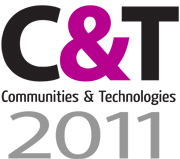Playpolis: Transyouth and Urban Networking in Seoul
Abstract
With over half of the entire global population living in cities, we are facing an imminent and immense shift in how we live, work, and play. This is particularly so with the current and future development of cities as ubiquitous network environments. The city is connections, a technosocial network that brings together people, place, and technology. This urban network is a space full of frictions, or seams, joining various contradictory elements that are old and new, tangible and intangible, and big and small. This thesis argues that these frictions are the process of urban networking, without which the city cannot exist. It further argues that at the core of the friction is play, the phenomenon that is enacted at the centre of three inter-related elements of pressure, possibility, and pleasure.
The overarching aim of this study is to create new knowledge about how playful interactions (re)create the city via ubiquitous technologies, with an outlook to apply the knowledge for pragmatic innovations in relevant fields such as urban planning and technology development in the future. The study looks at the case of transyouth, the in-between demographic bridging youth and adulthood in Seoul, one of the most connected, densely populated, and quickly transforming metropolises in the world. Considering the elusiveness of ‘play’ as a subject and the complexity of urban networks, this study takes a three-tier transdisciplinary approach comprised of an extensive literature review, Shared Visual Ethnography (SVE), and interviews with leading industry representatives who design and develop the playscape for Seoul transyouth. Through these methodological tools, the study responds to the following four research aims:
- Examine the sociocultural, technological, and architectural context of Seoul;
- Investigate Seoul transyouth’s perception of the self and their technosocial environment;
- Identify the pattern of their playful interaction through which meanings of the self and the city are recreated;
- Develop an analytical framework for enactment of play.
Team
- Jaz Hee-jeong Choi (PhD Candidate)
- Prof. Stuart Cunningham (Principal Supervisor)
- Assoc. Prof. Michael Keane (Associate Supervisor)
- Assoc. Prof. Marcus Foth (Associate Supervisor)
Publications
Choi, J. H.-j. (2009, in press). The City, Self, and Connections: Transyouth and Urban Social Networking in Seoul. In S. Hemelryk Donald, T. Anderson & D. Spry (Eds.), Youth, Society and Mobile Media in Asia. London: Routledge. (eprints >)
Choi, J. H.-j., M. Foth, & G. Hearn. (2009). Site specific mobility and connection in Korea: bangs (rooms) between public and private spaces. Technology in Society, 31(2), 133-138. (eprints >)
Choi, J. H.-j., & Greenfield, A. (2009). To Connect and Flow in Seoul: Ubiquitous Technologies, Urban infrastructure and Everyday Life in the Contemporary Korean City. In M. Foth (Ed.), Handbook of Research on Urban Informatics: The Practice and Promise of the Real-Time City (pp. 21-36). Hershey, PA: IGI Global. (eprints >)
Choi, J. H.-j. (2008). The City of Connections: Urban Social Networking in Seoul. Proceedings ACM SIGCHI MindTrek conference (pp. 189-193). Tampere, Finland. [Best Paper Award] (eprints >)
Choi, J. H.-j. (2008). The New Korean Wave of U. In H. K. Anheier, Y. R. Isar, A. Paul & S. Cunningham (Eds.), The Cultural Economy (pp. 148-154). London: Sage. (eprints >)
Choi, J. H.-j. (2007). Approaching the Mobile Culture of East Asia. M/C Journal, 10(1). (eprints >)


